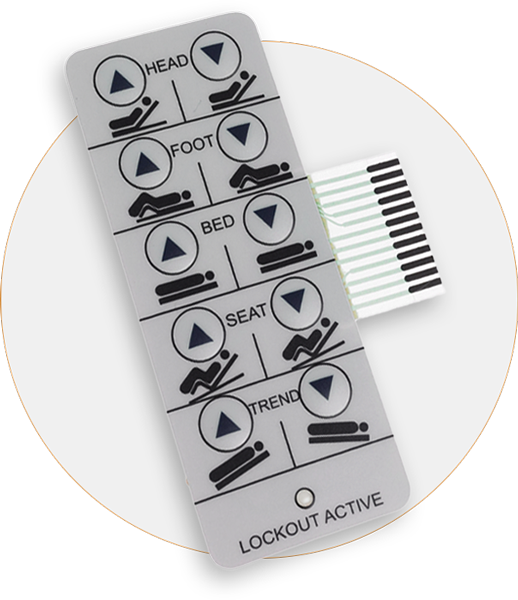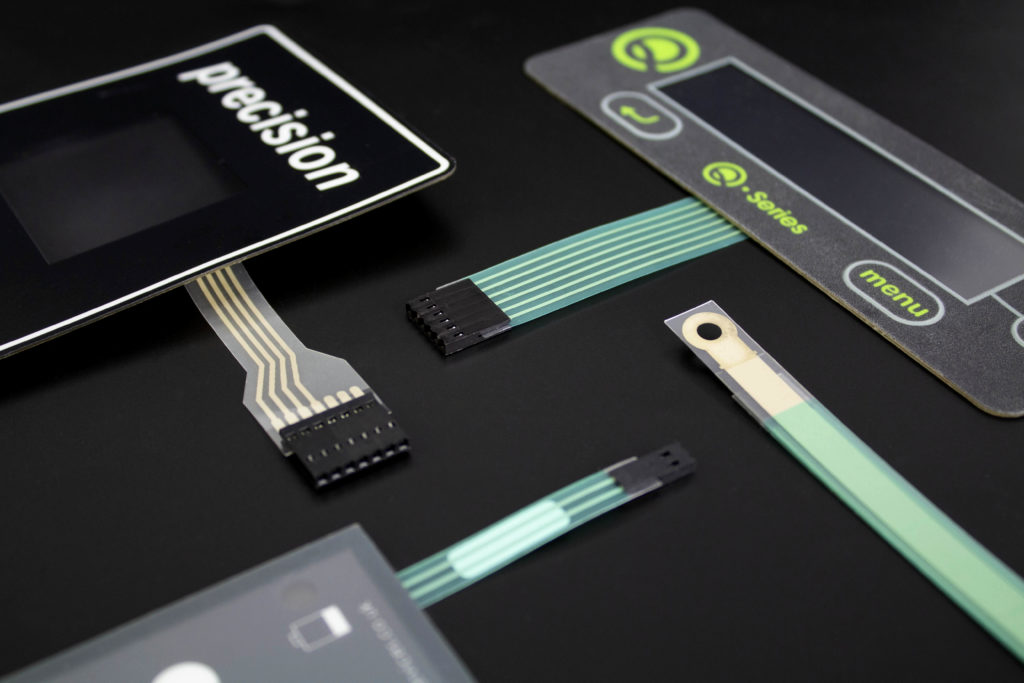Choosing the Right Membrane Switches for Your Product’s Needs
Choosing the Right Membrane Switches for Your Product’s Needs
Blog Article
Discover Just How Membrane Switches Function and Their Function in Modern Electronic Devices
Membrane Switches stand for an advanced integration of innovation and layout within the realm of contemporary electronic devices, serving as crucial interfaces in many devices. Comprehending the details of Membrane switch capability and their broader ramifications in boosting user experience invites additional expedition into their style, benefits, and the innovative advancements forming their future in technology.
What Are Membrane Switches?

Membrane switches are distinguished by their toughness and resistance to ecological variables, such as dirt, moisture, and severe temperatures. They can be customized with various graphics, colors, and tactile feedback options, enhancing user experience while maintaining aesthetic appeal - membrane switches. The unification of published circuits enables for seamless integration right into tools, enhancing general performance.
The flexibility of Membrane buttons appears in their capability to support both easy and complex control features. They can integrate features such as LED indications and touch-sensitive modern technology, providing to certain user needs. As modern technology remains to evolve, Membrane Switches continue to be crucial for making it possible for user-friendly and efficient interface, thereby playing a crucial function in the advancement of modern-day electronic devices.
Elements of Membrane Switches
Membrane switches are composed of a number of crucial parts that collaborate to develop a practical and dependable interface. The main elements consist of the visuals overlay, sticky layer, spacer layer, and conductive traces.
The visuals overlay works as the customer interface, usually printed on a versatile substratum such as polyester or polycarbonate. This layer not only gives aesthetic charm yet likewise consists of tactile comments, aesthetic cues, and safety attributes. Below the visuals overlay exists the adhesive layer, which protects the button to the device and makes sure durability versus ecological stresses.
The spacer layer is vital for keeping the needed gap between the visuals overlay and the circuit layer. This void permits the activation of the switch when pressure is used. The conductive traces, normally made from silver or carbon, create the electrical pathways that complete the circuit when the switch is engaged.
In addition, a support layer might be included for structural support and insulation. These elements work together effortlessly, ensuring that Membrane buttons are both easy to use and resilient, making them crucial in various modern electronic applications.
How Membrane Switches Job
Exactly how do Membrane Switches feature properly within digital gadgets? Membrane Switches run on the concepts of pressure-sensitive innovation, using a layered building that includes graphic overlays, glue layers, and conductive components. When an individual applies pressure to the button, the leading layer warps, allowing the conductive components underneath to make get in touch with and finish an electric circuit. This action sets off the wanted feature within the tool.
The design of Membrane switches is essential for their reliable operation (membrane switches). The layers are meticulously crafted to offer responsive comments, resilience, and resistance to ecological aspects such as moisture and dirt. The addition of domes-- tiny, increased areas within the button-- enhances tactile action, offering customers with a recognizable click feeling upon activation
Moreover, Membrane buttons can be customized in regards to dimension, shape, view website and graphics, making them ideal for various applications. They are commonly used in control panels, clinical tools, and read this post here consumer electronic devices as a result of their sleek layout and reliability. Generally, the reliable functioning of Membrane buttons is pivotal in improving customer communication and guaranteeing seamless procedure in modern-day electronic gadgets.

Applications in Modern Tools
Using their unique design and performance, Membrane switches have ended up being indispensable parts in a broad variety of contemporary digital tools. These versatile interfaces are employed in consumer electronics, industrial equipment, medical devices, and automobile controls, offering seamless user interaction.
In consumer electronics, Membrane buttons are generally located in devices like microwaves, cleaning equipments, and various other family gadgets, where they allow user-friendly control with a smooth profile. Their low-profile layout promotes assimilation right into small devices, improving aesthetic allure without endangering capability.
In commercial applications, Membrane Switches work as control board for machinery, offering resilience and resistance to severe environments. Their capacity to hold up against wetness and pollutants makes them perfect for use in production and handling markets.
Medical tools likewise gain from Membrane switches, which are designed to be very easy to clean and maintain, making sure hygiene in clinical setups. They are frequently made use of in analysis equipment, person tracking systems, and mobile medical tools, where dependability is paramount.
Benefits of Membrane Buttons
One of the crucial benefits of Membrane buttons is their adaptability, which allows them to be tailored for a variety of applications across numerous markets. These buttons can be created in various forms and dimensions, fitting unique product needs while offering smooth integration right into devices. Their thin account enables a small and sleek style, usually improving the visual appeal of electronic items.
An additional significant benefit is their durability - membrane switches. Membrane buttons are normally resistant to dirt, moisture, and chemicals, making them ideal for extreme settings. This resilience extends their life expectancy contrasted to traditional mechanical switches, minimizing the demand for frequent replacements
Furthermore, Membrane Switches deal cost-effectiveness. The production procedure involves printing technologies that lessen manufacturing prices, specifically for large runs. This affordability, combined with low maintenance demands, makes them an appealing alternative for suppliers.

Conclusion
In conclusion, Membrane Switches stand for a significant development in user interface innovation within contemporary electronics. Their layered building, pressure-sensitive operation, and adaptability to various applications underscore their importance across multiple sectors. The durability and environmental resistance of Membrane Switches additionally improve their charm, making them a preferred choice for manufacturers looking for reliable and personalized remedies. As the need for instinctive and durable interfaces proceeds to expand, the function of Membrane switches in shaping customer experience will most certainly increase.
Membrane Switches represent a sophisticated assimilation of technology and layout within the realm of modern-day electronics, offering as vital interfaces in many devices.In the world of modern electronic devices, Membrane Switches offer as crucial parts that help with user interaction with tools. As innovation proceeds to develop, Membrane Switches remain crucial for allowing reliable and intuitive individual interfaces, therefore playing a critical duty in the advancement of contemporary digital devices.
Exactly how do Membrane Switches function efficiently within digital tools? Overall, the effective performance of Membrane switches is pivotal in boosting user interaction and ensuring seamless operation in modern-day digital devices.
Report this page